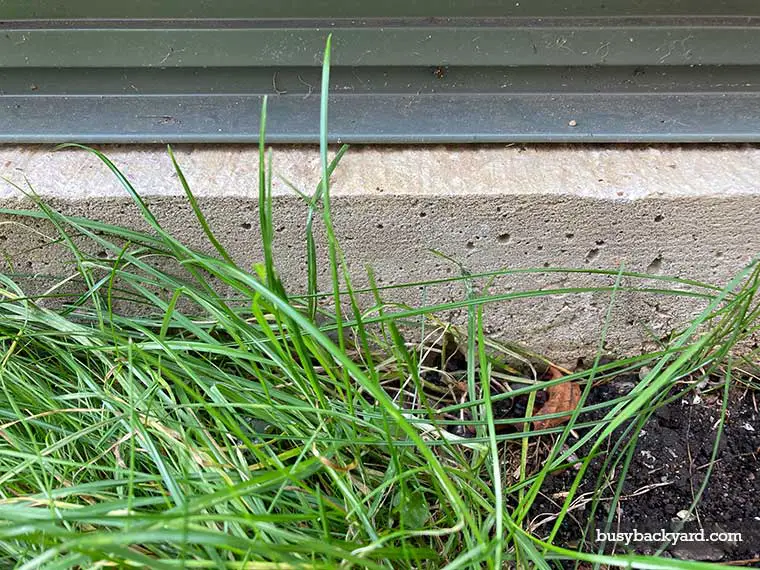A couple of years ago I embarked on a backyard refurb project, making many mistakes along the way. One of those was to not do my own research on whether you can put concrete over grass. After consulting with a builder friend, we decided to put this short guide together – the quick answer first:
Can you pour concrete over grass? Yes, you can pour concrete over grass, but doing so directly will give you substandard results. Grass laid over concrete is likely to crack due to not forming properly.
Pouring concrete over grass
Pouring concrete over grass is possible. However, before you get ready to dig up your lawn and lay the concrete, there are some things to consider.
If you plan to pour a large amount of concrete on grass, the top layer of soil should be properly dug through (tilling). In this article, I have gone through some things to consider in detail before you pour concrete over grass in your own backyard of garden.

1. Preparing to lay concrete over grass
You will need to remove the grass then start tilling the soil. You are looking to get as smooth a surface as possible, and with all the grass removed. Remove any weeds or tough roots which could attempt to grow back and damage the concrete.
2. Prepare the concrete
There are other guides online which go into how to prepare concrete, so I won’t go into detail here. In simple terms though, slowing mix the concrete powder with the water.
3. Lay the wood forms in place then pour the concrete
Once the forms are over where the grass used to be, you can pour the concrete in. You can then smooth it down.
FAQs about concrete being laid on grass
How long will concrete poured on grass last?
Concrete won’t last long when poured on grass unless you completely remove the grass and tiller the soil. Done correctly, concrete will last for decades
Are there any alternatives to laying concrete on grass?
If you are not comfortable pouring concrete onto grass and soil, there are other ways to make it work. You can purchase a pre-made topping for the ground, made specifically for this purpose, or lay down tiles or bricks instead.
What happens when you pour concrete over grass?
When you pour concrete over grass, what happens is that the cement mixture will bond with it and create a new surface for people to walk on. Before doing this, you need to make sure your ground is properly prepared first, or else your concrete may not stick as well as it should and might end up cracking after a few months of use.
What’s the best way to pour concrete over grass?
The best way to pour concrete over the lawn would be to follow all the steps carefully and ensure that everything is done correctly so that the outcome looks even and beautiful when you are finished! You don’t want unsightly cracks in your brand-new surface, which would invalidate any efforts made into preparing it beforehand.
Why do you have to remove grass before pouring concrete?
You must remove the grass before pouring concrete over it because doing this will allow you to create a strong bond between your ground and your cement. Any particles of dirt or debris left beneath could cause problems later when someone walks across it, resulting in new cracks forming, which would prevent further use of the surface.
Can you concrete over weeds?
Literally speaking, yes you can. But you won’t get great results just like you do with putting concrete on grass.
Can you pour cement over pebbles?
No, you cannot pour concrete over pebbles because the smaller particles in between will prevent the cement from sticking to the ground correctly. It would have a very weak bond that could cause it to crack after a short period of time and ruin the entire effect you wanted to create with a beautiful new floor.
Can you pour concrete on dirt?
No, pouring concrete on dirt would be impractical because it would not have proper support underneath! Dirt is an extremely soft material, so this isn’t a good idea unless you want to see cracks form within a few days or weeks of its completion.


